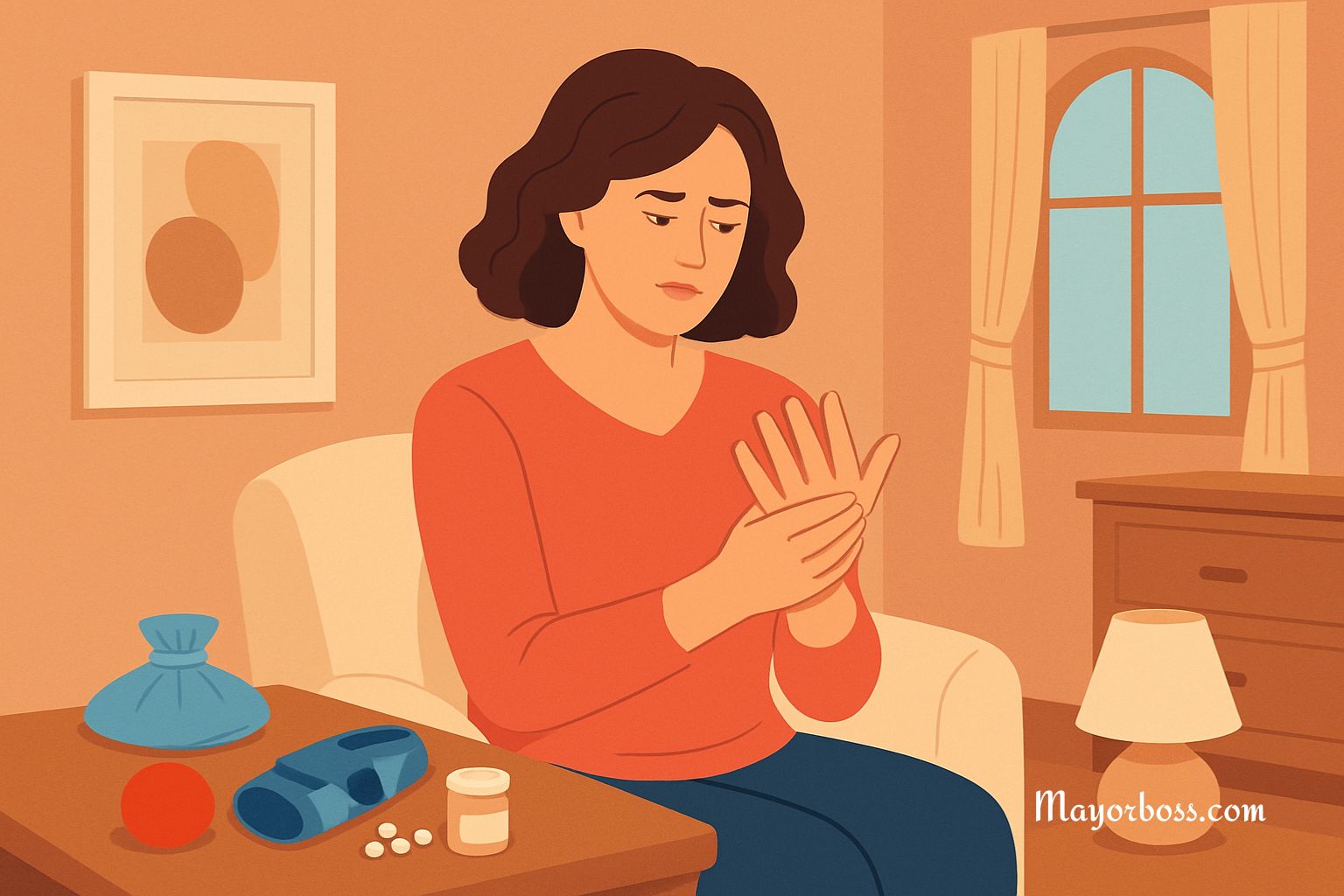5 Ways to Reduce Crippling Hand Pain
Hand pain can make simple tasks like buttoning a shirt or holding a cup feel impossible. Whether the cause is arthritis, nerve problems, or injury, managing hand pain early can protect your quality of life. I often remind patients that early care can prevent long-term damage. Here are five effective ways to ease crippling hand pain.

1. Apply Ice or Heat Therapy
Ice and heat are simple but powerful tools for hand pain relief.
Ice helps reduce swelling and numb sharp pain. Wrap an ice pack in a thin towel and place it on your hand for 15 to 20 minutes. Use it several times a day, especially after activities that make the pain worse.
Heat works differently. It relaxes muscles, boosts blood flow, and eases stiffness. Warm your hands with a heating pad, a warm towel, or soak them in warm water. Limit heat therapy to about 20 minutes to avoid skin burns.
Choosing ice or heat depends on your symptoms. Ice is better for swelling or new injuries. Heat is helpful when the hand feels stiff or cramped.
2. Stretch and Strengthen Your Hands
Gentle exercises can protect hand function and reduce pain over time. Stretching keeps the joints flexible. Strengthening improves muscle support around the joints.
One simple stretch is to open your hand wide, hold for five seconds, then slowly make a fist. Repeat 10 times. For strengthening, try squeezing a soft rubber ball or a therapy putty. Do this for a few minutes each day.
Always move within your comfort zone. Sharp pain is a warning to stop. It is best to work with a hand therapist if the exercises are difficult.
3. Use Hand Braces or Splints
Braces and splints support weak joints and reduce pressure on painful areas. They can hold your hand in a neutral position, limit unnecessary movement, and protect against further injury.
There are different types depending on the cause of your pain. For example, a wrist splint may help carpal tunnel syndrome, while a thumb brace can relieve pain from arthritis.
Wear the brace during activities that strain your hand or while sleeping if pain wakes you up at night. Make sure the brace fits properly. A poorly fitted brace can cause more problems than it solves.
4. Take Medications
Medications can play a vital role in pain management, but they must be used carefully.
Over-the-counter pain relievers, such as ibuprofen or acetaminophen, can ease inflammation and discomfort. However, they are not a long-term solution. Use them during flare-ups or when the pain prevents you from completing daily activities.
For severe pain, your doctor might recommend prescription treatments. This could include stronger anti-inflammatory drugs, corticosteroid injections, or medications that calm nerve pain.
It is important to follow the prescribed dosage and talk to your doctor if you need frequent medication. Long-term use without guidance can cause serious side effects.
5. Address the Root Cause
Hand pain often signals a deeper problem that needs attention.
Common causes include osteoarthritis, rheumatoid arthritis, carpal tunnel syndrome, gout, and nerve entrapments. Each condition requires a different treatment plan. For example, arthritis may need disease-modifying medications, while carpal tunnel syndrome might improve with nerve gliding exercises or surgery.
Ignoring the cause allows more damage to occur. Schedule a medical evaluation if you have persistent hand pain, especially if it affects your ability to function. Early diagnosis can prevent permanent joint or nerve damage.
Your doctor may recommend imaging tests like X-rays, ultrasound, or MRI to get a clearer picture of the problem. Blood tests may also be needed if inflammation or autoimmune disease is suspected.
Daily Hand Care Routine Checklist 🖐️
Morning
✅ Gentle hand stretches (open/close fists, spread fingers, wrist circles)
✅ Optional warm water soak (5–10 minutes)
During the Day
✅ Use ergonomic tools (pens, kitchen tools, keyboards) to reduce strain
✅ Wear a soft hand brace if doing heavy work (typing, cleaning, lifting)
✅ Stretch hands every 1–2 hours (open/close fists, shake hands, stretch fingers)
✅ Apply ice (15 minutes) if swelling or flare-up pain occurs
Evening
✅ Gentle hand exercises (stress ball squeeze, thumb touches)
✅ Wear a night splint or brace if needed
✅ Massage hands with a doctor-approved cream
Quick Daily Reminders
✅ Drink plenty of water
✅ Maintain good posture
✅ Choose anti-inflammatory foods (like salmon, walnuts, leafy greens)
Final Thoughts
Crippling hand pain should never be ignored. Simple home treatments like ice, stretching, and using a brace can provide relief. Medications offer short-term support, but it is important to treat the underlying cause to prevent long-term disability.
If hand pain affects your daily life, seek medical advice. With early action and the right plan, you can regain strength, reduce discomfort, and protect the health of your hands for years to come.






